Post by Michael Deveney, Noggin volunteer from Portland State University
“The most interesting people you’ll find are ones that don’t fit into your average cardboard box. They’ll make what they need, they’ll make their own boxes” –Dr. Temple Grandin
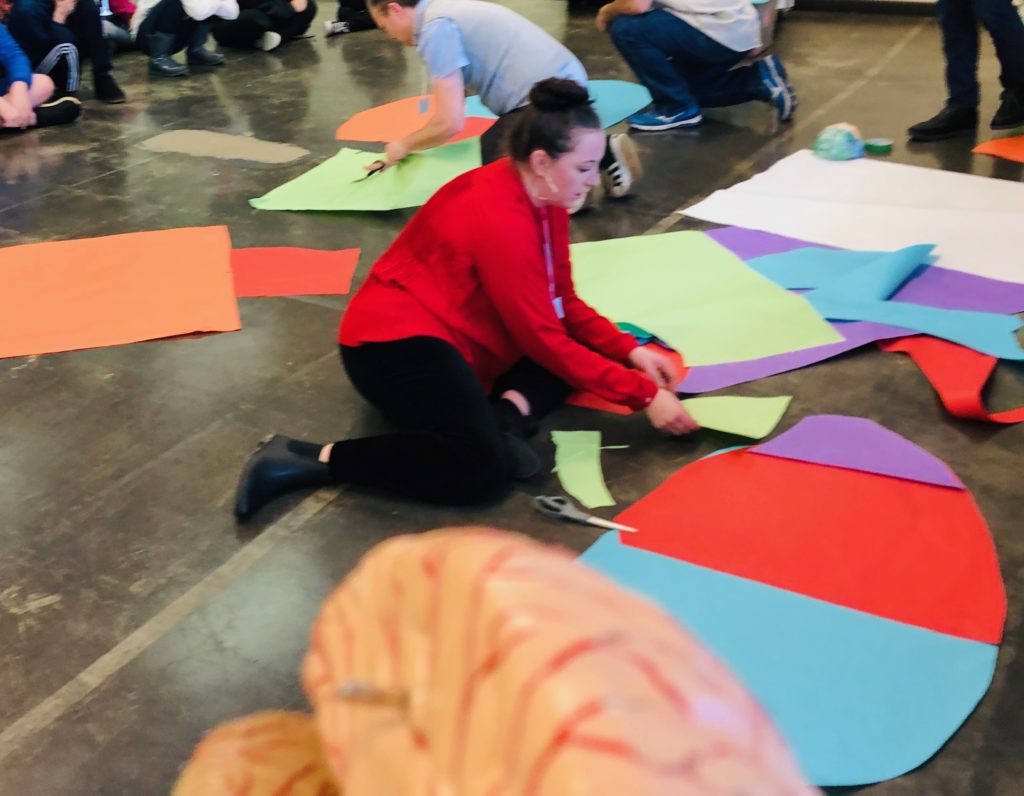
I spent my Valentine’s Day with students at Bridges Middle School, one of the few programs in Oregon devoted to young people with learning differences, including those associated with autism and ADHD. Honing my inner teacher, dressed in my red shirt and heart earrings, I walked in excited to listen, and learn – and (as per usual) I did not know exactly what to expect!
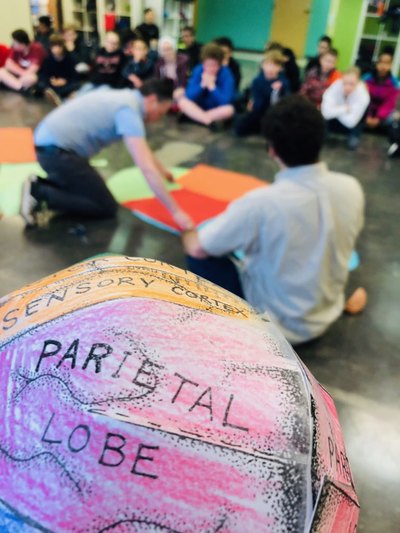
After numerous Noggin experiences in K-12 classrooms, I was not surprised to hear so many amazing questions from these 5th – 8th grade students. What DID take me aback, however, was their absolute fascination and enthusiasm with neuroscience – and (in several cases) their extensive knowledge of the human brain!
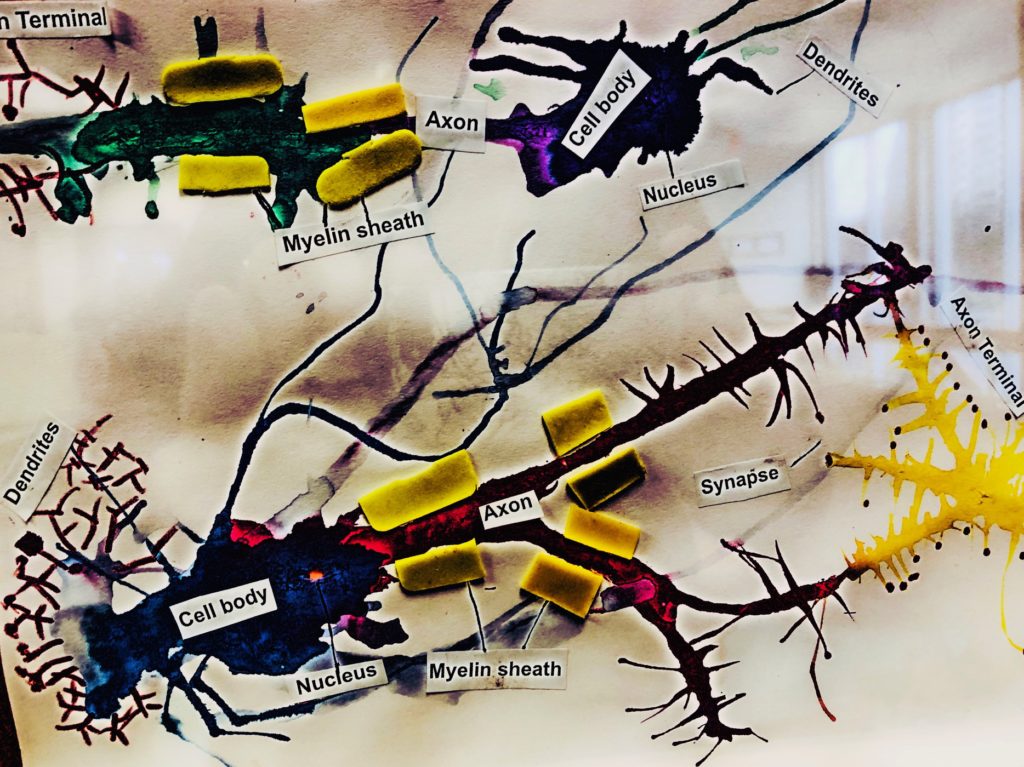
“My students have already learned about the basics of neurons and have created paintings of neurons which are currently up in the hallway…” -Heather Hofeld, Science Teacher
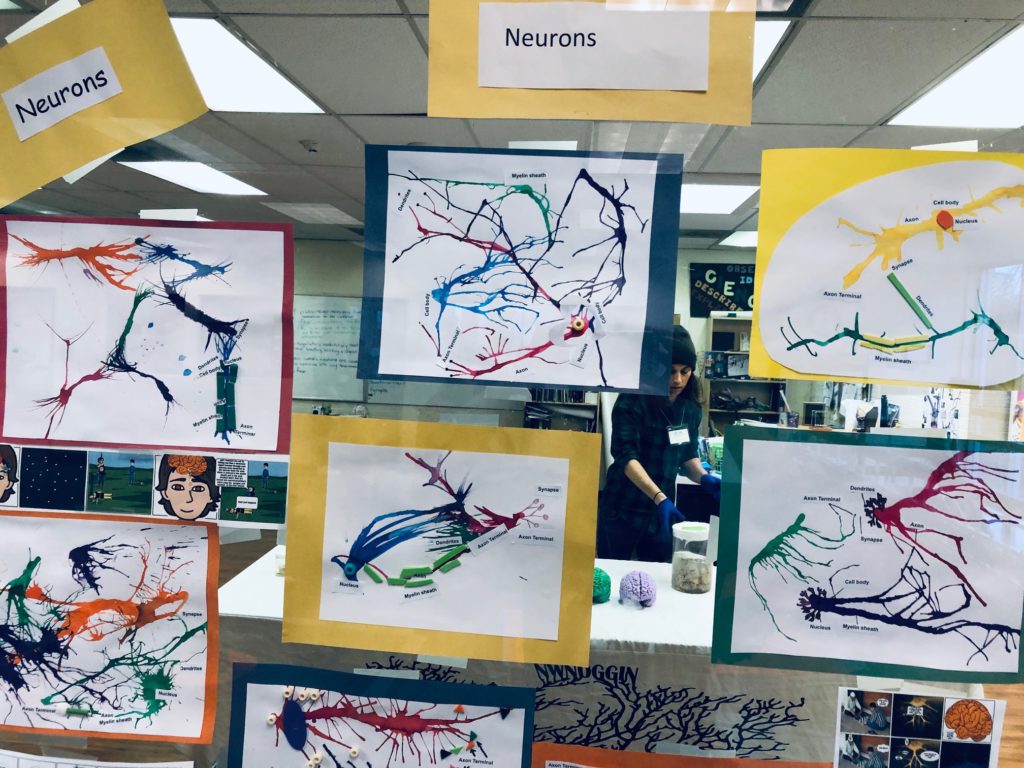
Their science teacher, Heather Hofeld, had been discussing brain cells, as well as different regions of the nervous system, including how areas connect and and what they are thought to do, and we were able to fine tune some of the details that were still lingering in their own amazing brains.
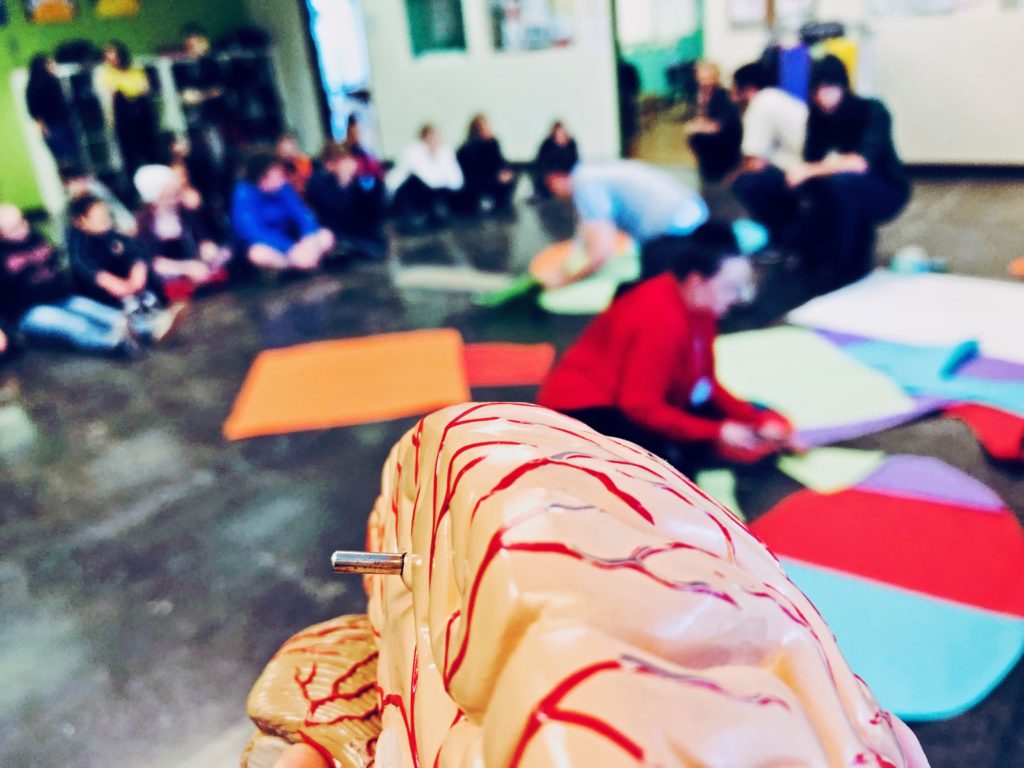
Volunteer Andrew Stanley (from PSU), Noggin Arts Coordinator Jeff Leake and myself sat on the floor cutting out huge lobes and other structures of the brain using rather large and unwieldy pieces of craft paper while Eric Fezco, who studies brain development, autism and ADHD at OHSU, and Bill Griesar from NW Noggin set up our real brains and models, and gave quick introductions…
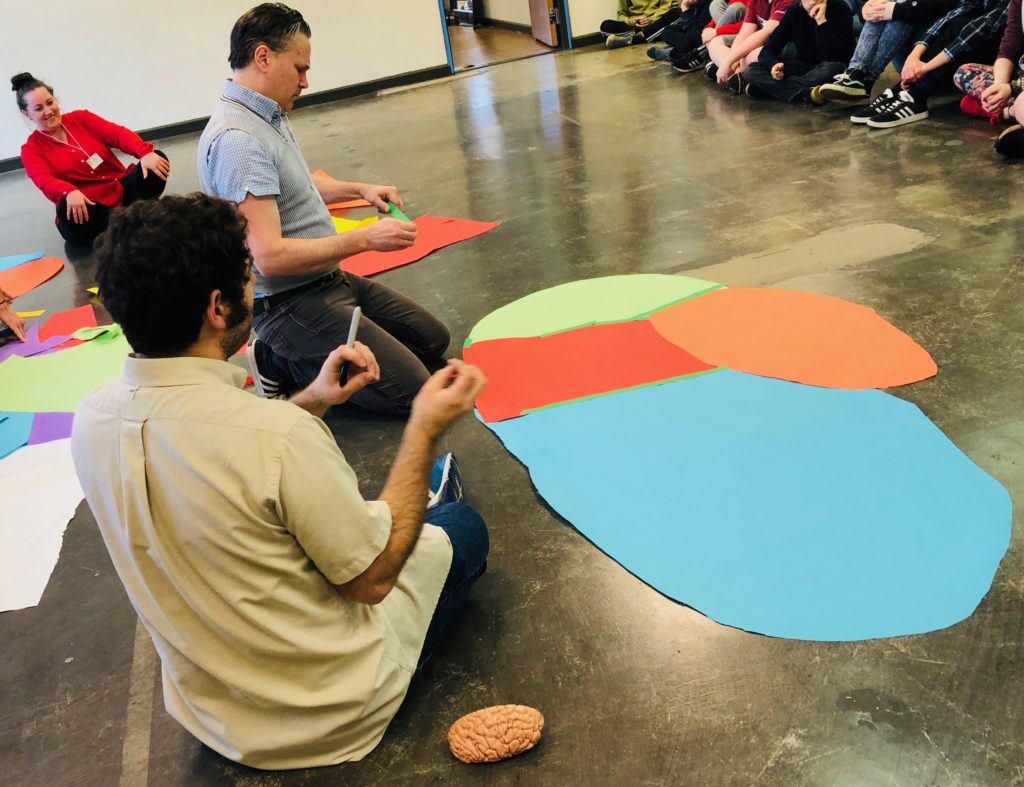
This brain mapping task was easier said than done, but happily we managed to cut out the frontal, parietal, temporal, and occipital lobes, as well as the cerebellum, brain stem, and corpus callosum.
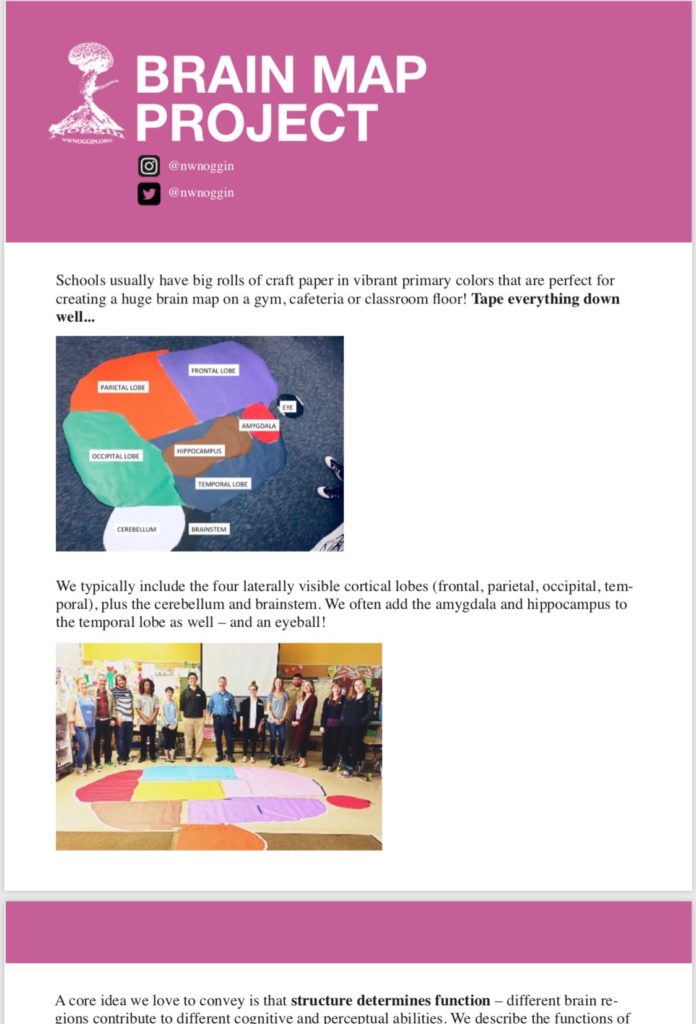
LEARN MORE: STEAM ART PROJECTS
Then came discussion of which lobe was which, and their functions. And then the questions…
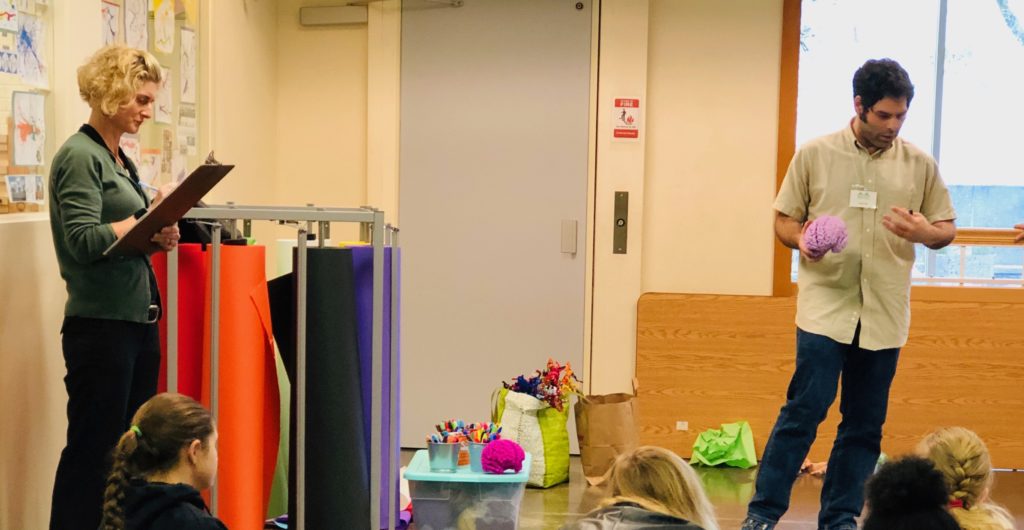
My word, the students asked questions I had honestly never thought of! “What are the differences between a ‘typical’ brain and a brain that is on the autism spectrum?” “Is there such a thing as a ‘typical’ brain?” “What about ADHD?” “What’s happening in my brain when my body feels tense?” “Where is our brain activating when we play video games?” “What deficits do we face when we have a tumor?” “Why do I feel dizzy sometimes? And why does the world seem to flip to one side all of a sudden like I’ve twisted my neck?” “What is the ‘motor strip’ and the ‘sensory strip’ and what do they do?” “Are there benefits to autism, and ADHD?” “Where exactly does morphine act in the brain – and I mean exactly, at which specific receptors – and what does it do to how a neuron responds, and whether it sends electric currents?!”

“Sometimes it is the people no one can imagine anything of who do the things no one can imagine” –Alan Turing
Those diagnosed with autism often experience difficulty with social communication, along with highly focused interests. Yet highly focused interests can drive the development of expertise, and discovery. Autism is a “spectrum” disorder; meaning that there is tremendous variation in both the behavioral symptoms and severity. Based on the questions, the brain was definitely an area of interest for many, and several had done research!
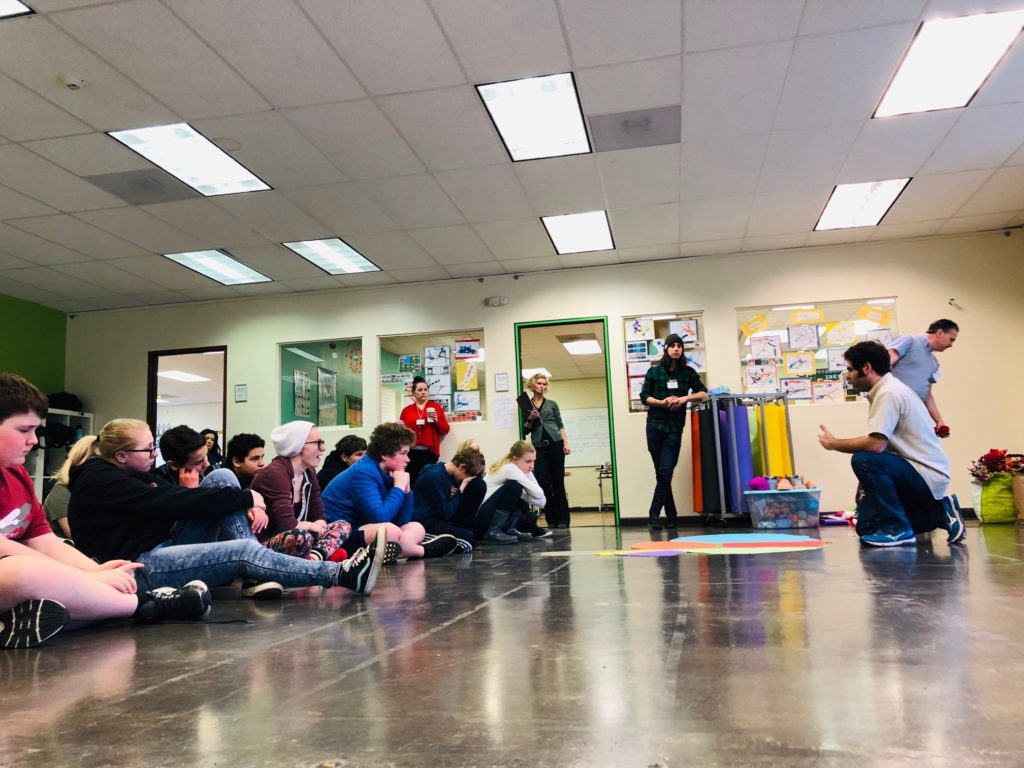
“We have a wide range of cognitive ability at Bridges with students performing below grade level and those who could probably handle college course work…” -Heather Hofeld
LEARN MORE: Autism Spectrum Disorder
LEARN MORE: Autistic expertise: a critical reflection on the production of knowledge in autism studies
Eric Fezco, who is a National Library of Medicine Postdoctoral Trainee in the Department of Medical Informatics and Clinical Epidemiology at OHSU, described some of his own research aimed at developing new approaches to diagnosing clinical subtypes in both autism and ADHD. Not everyone diagnosed with these conditions has the same brain. Eric and his colleagues are discovering structural and functional differences in how brain networks develop and interact that may suggest more effective, targeted approaches to helping people in different subgroups thrive…

“Vibrant waves of sequenced patterns emerged in my head whenever I looked at musical notes and scores. Like pieces of a mysterious puzzle solved, it was natural for me to see music and its many facets as pictures in my head. It never occurred to me that others couldn’t see what I saw.” –Stephen Shore
LEARN MORE: The Default Mode Network in Autism
LEARN MORE: Organization for Autism Research (OAR)
LEARN MORE: Subtyping cognitive profiles in ASD using a random forest algorithm
LEARN MORE: The hemodynamic response in children with Simplex Autism
LEARN MORE: Adolescent Brain Cognitive Development (ABCD) Study at OHSU
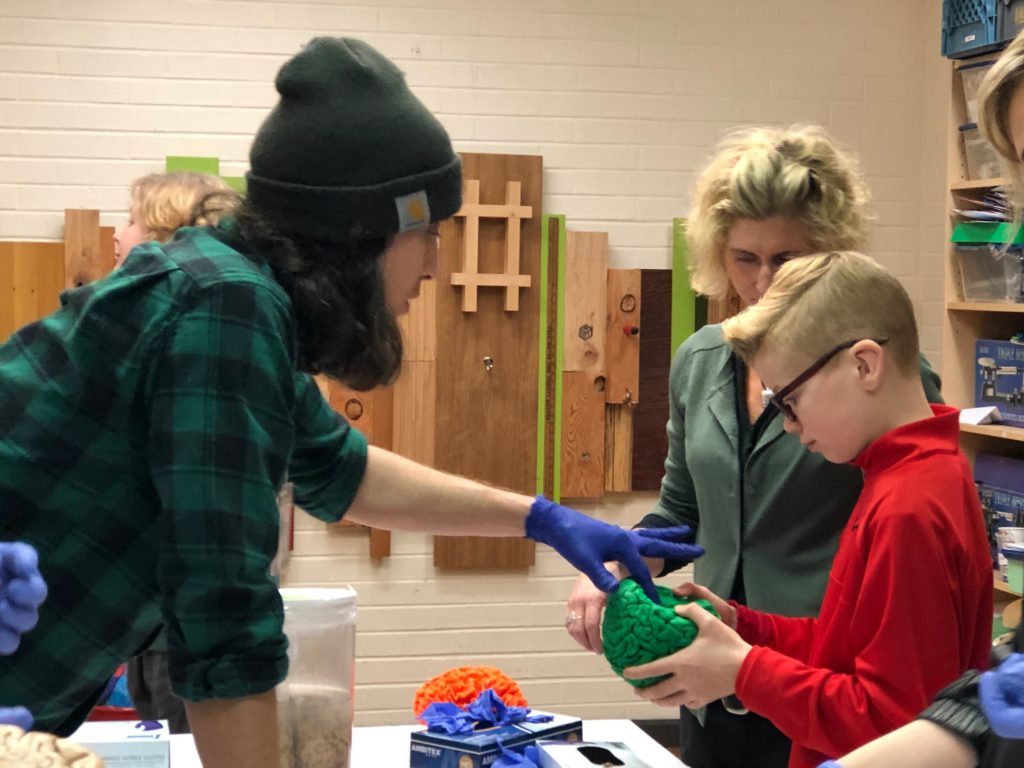
After an extensive and phenomenal Q and A session, we broke into two separate groups. In one classroom, the students could actually hold a real human brain, while in a second they put their artistic abilities to work. I’m usually more drawn to handing our real noggins to children, because I absolutely adore their reactions; however, today I decided to go to the art group.
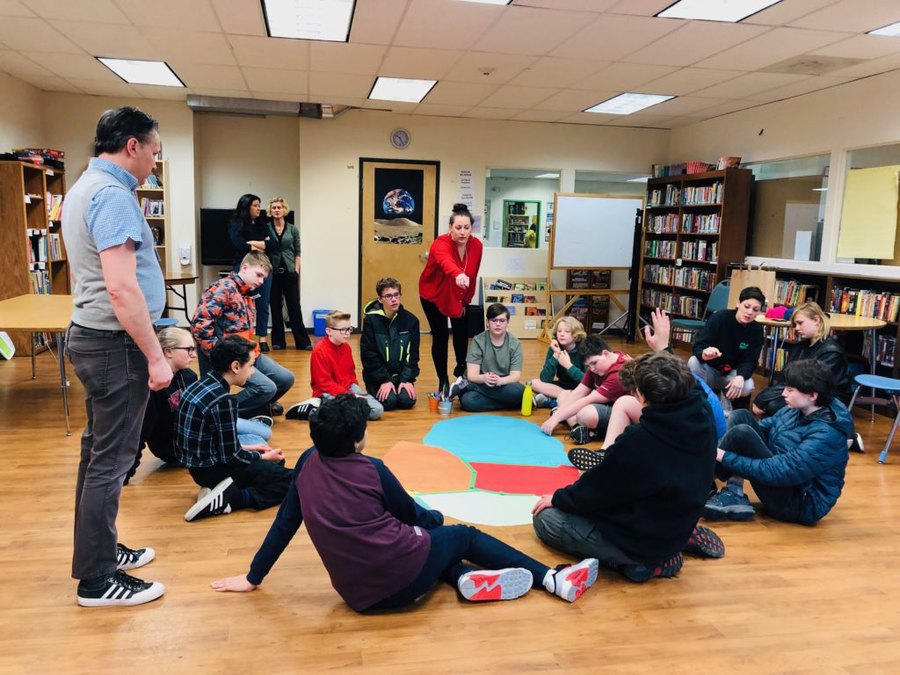
“Behavior is communication. Change the environment and behaviors will change.” – Lana David
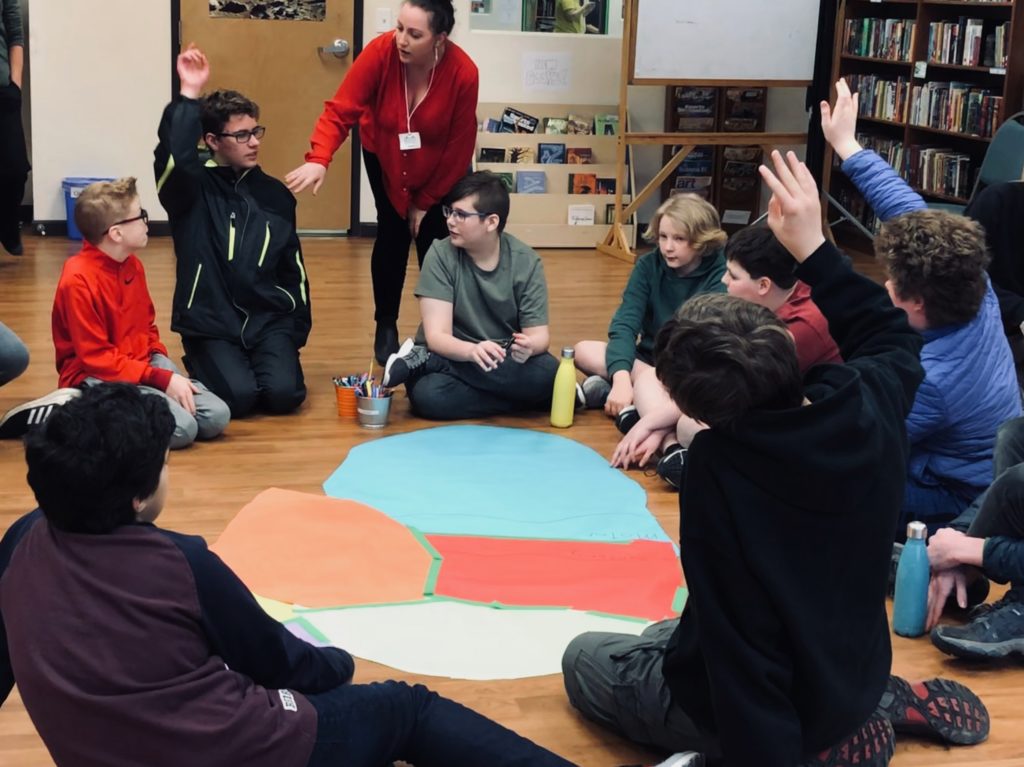
WOW! We went over lobes and other structures again, including cerebellum, hippocampus and amygdala, asking the students to identify structures and what they are responsible for.
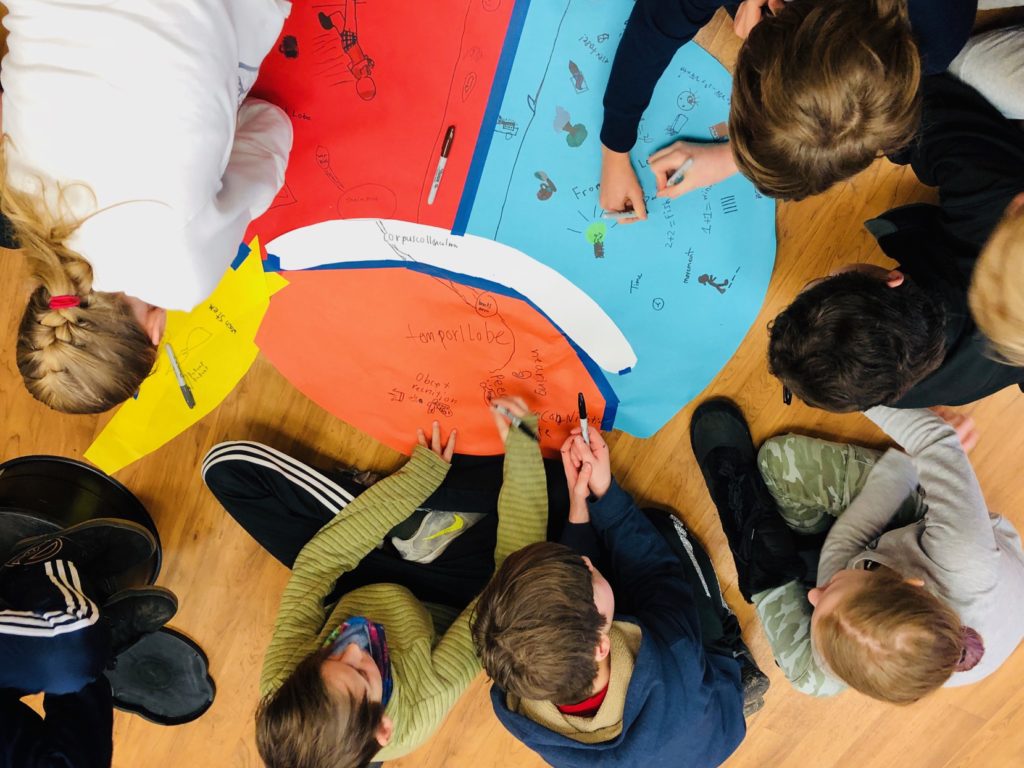
Everyone participated and it was awesome to see how excited and proud they were to deliver their answers. Afterwards, we asked the students to draw their own depictions of each function. How might you explain what the amygdala does to someone else?
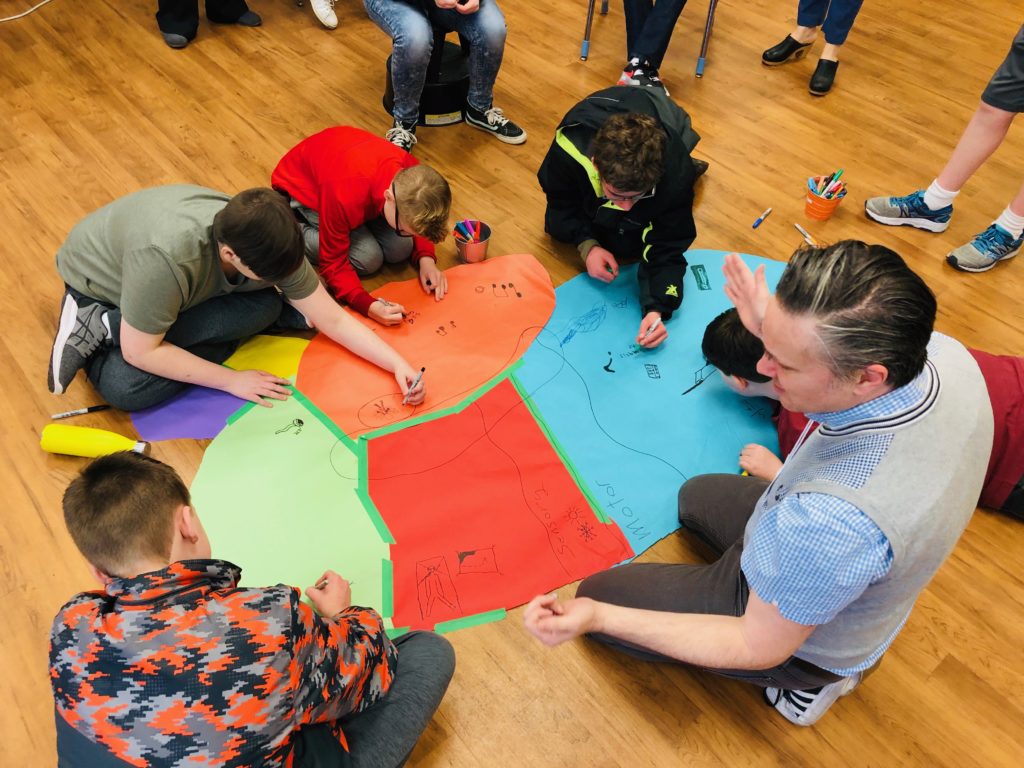
The ingenuity of these kiddos blew me away. How would you draw, for example, “balance” (an important contribution of neural circuits in both our cerebellum, and parietal lobes)? Well, by golly, you draw a snowboarder rail sliding. I can guarantee you that not only were these students motivated to draw, but the ideas they came up with to show function was well over my ability. It was fantastic and enlightening, just like all the other times I have interacted with students.
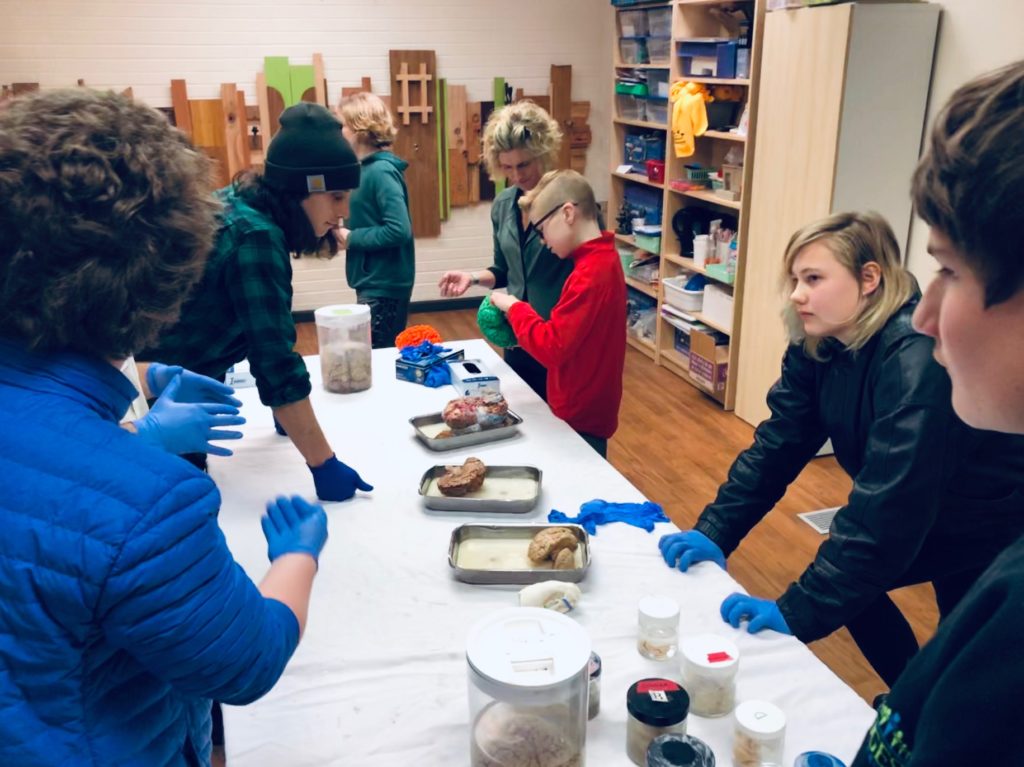
This truly was a day to remember, and I hope it will be for all of the students as well. There is just something so beautiful and magical about teaching our youth, and hearing their stories and interests, and I hope I get to do it for years to come.
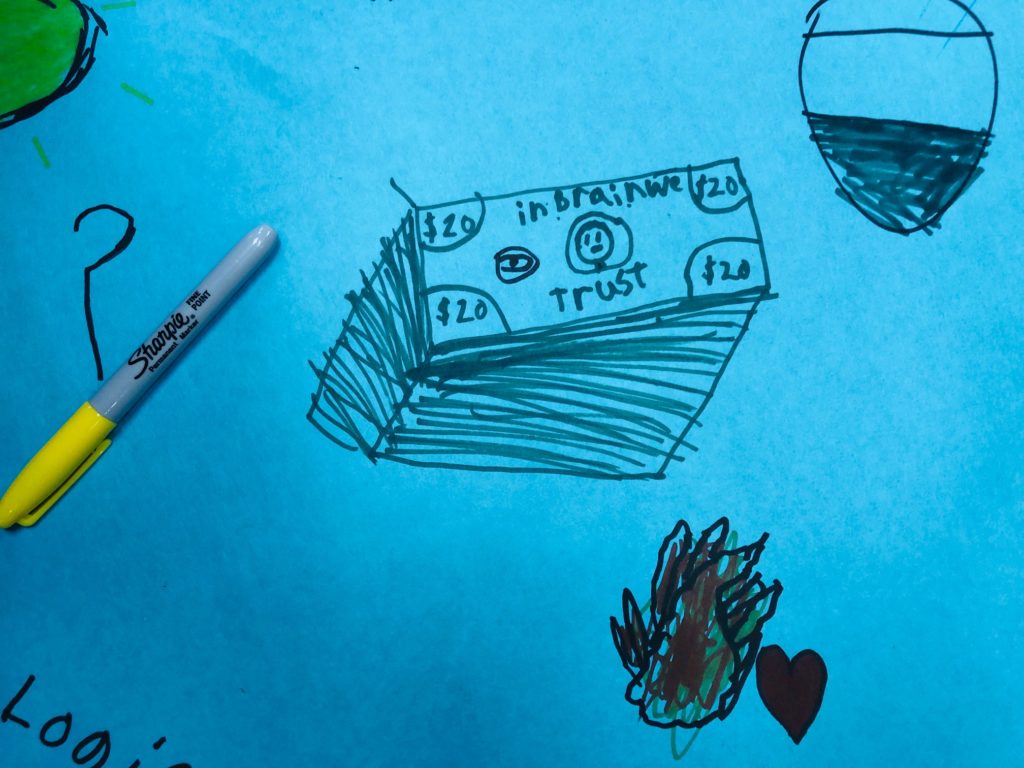
Thank you Heather and Bridges Middle School for inviting NW Noggin, and to all the volunteers. It was one of the best Valentine’s gifts I have ever received.


